
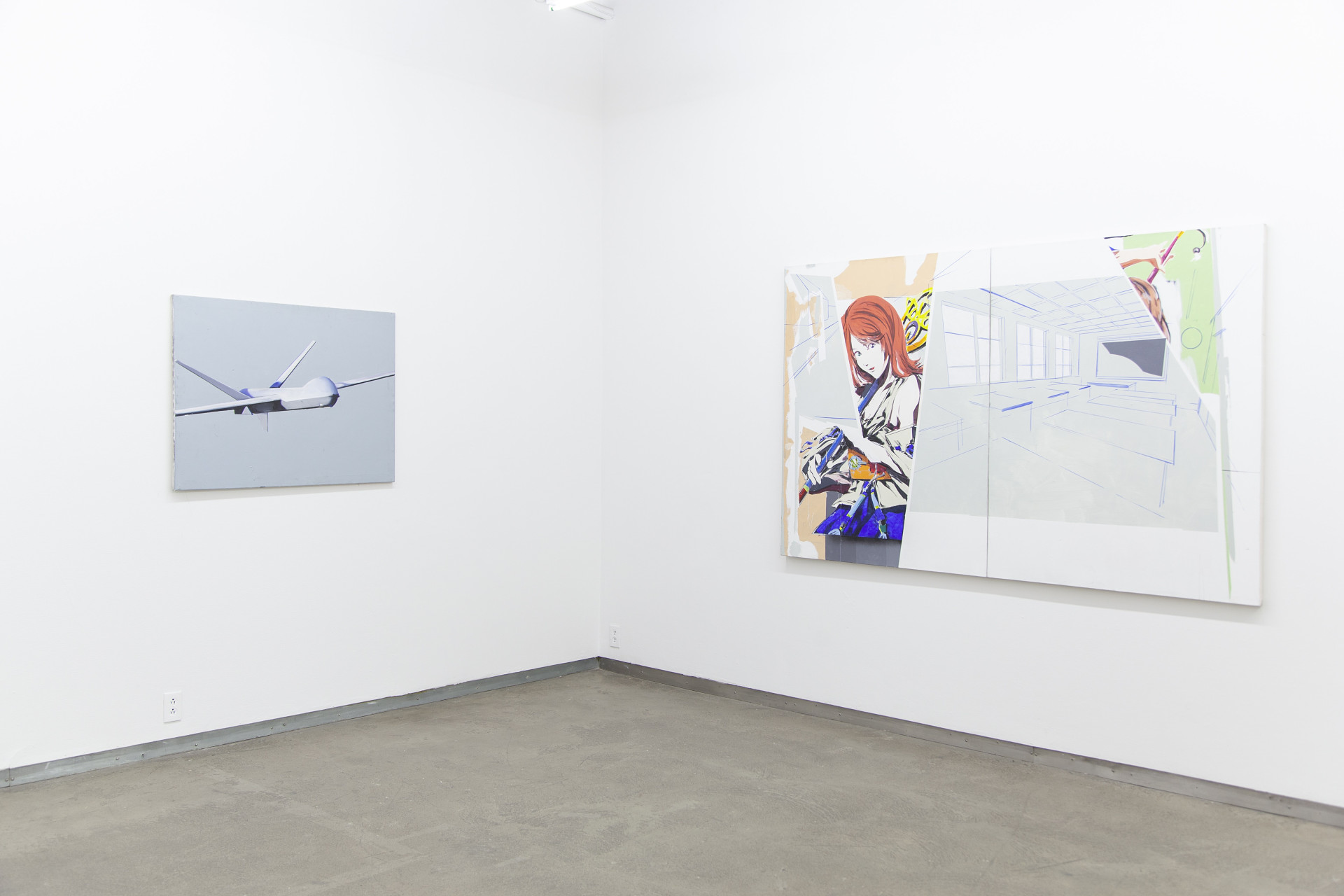
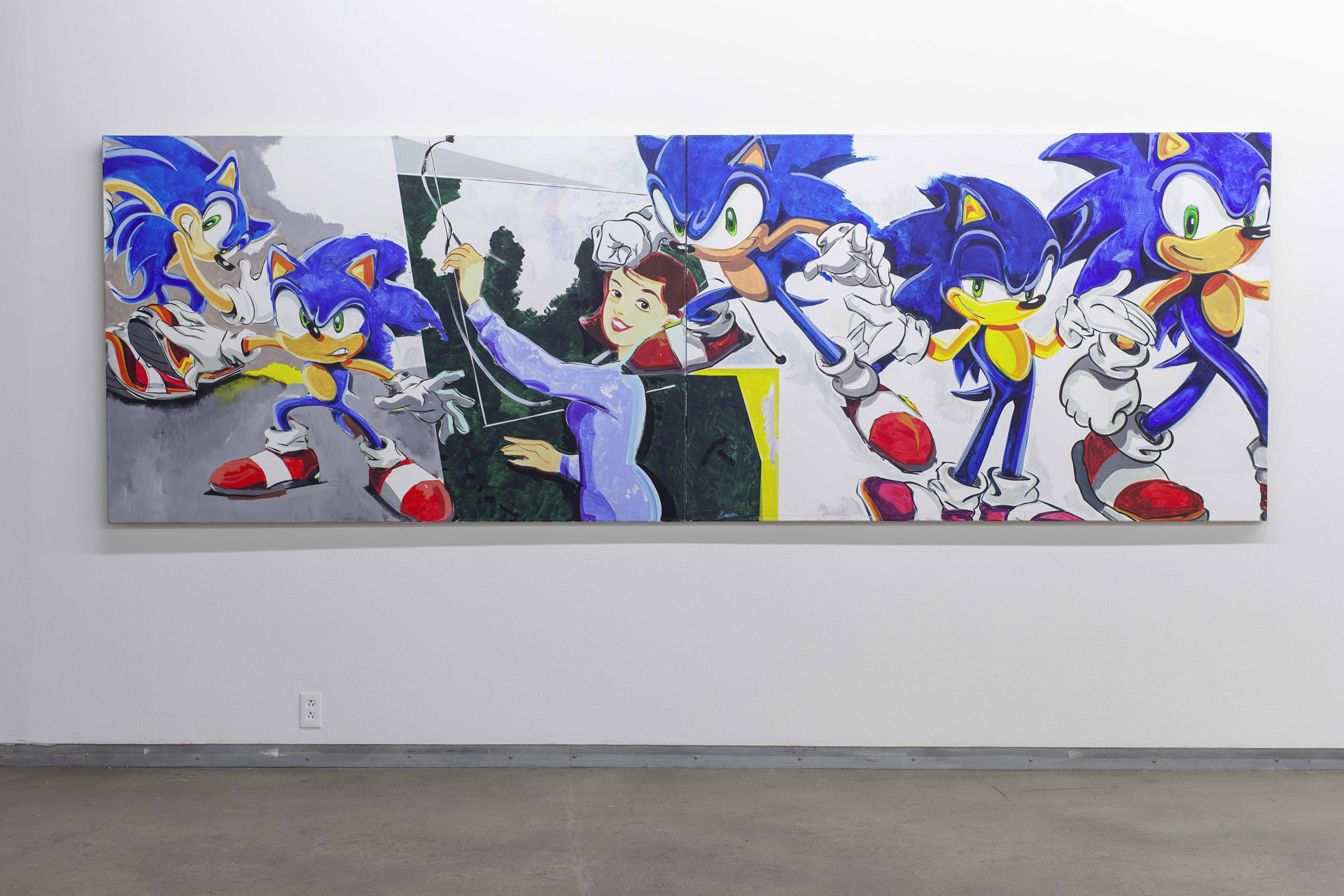
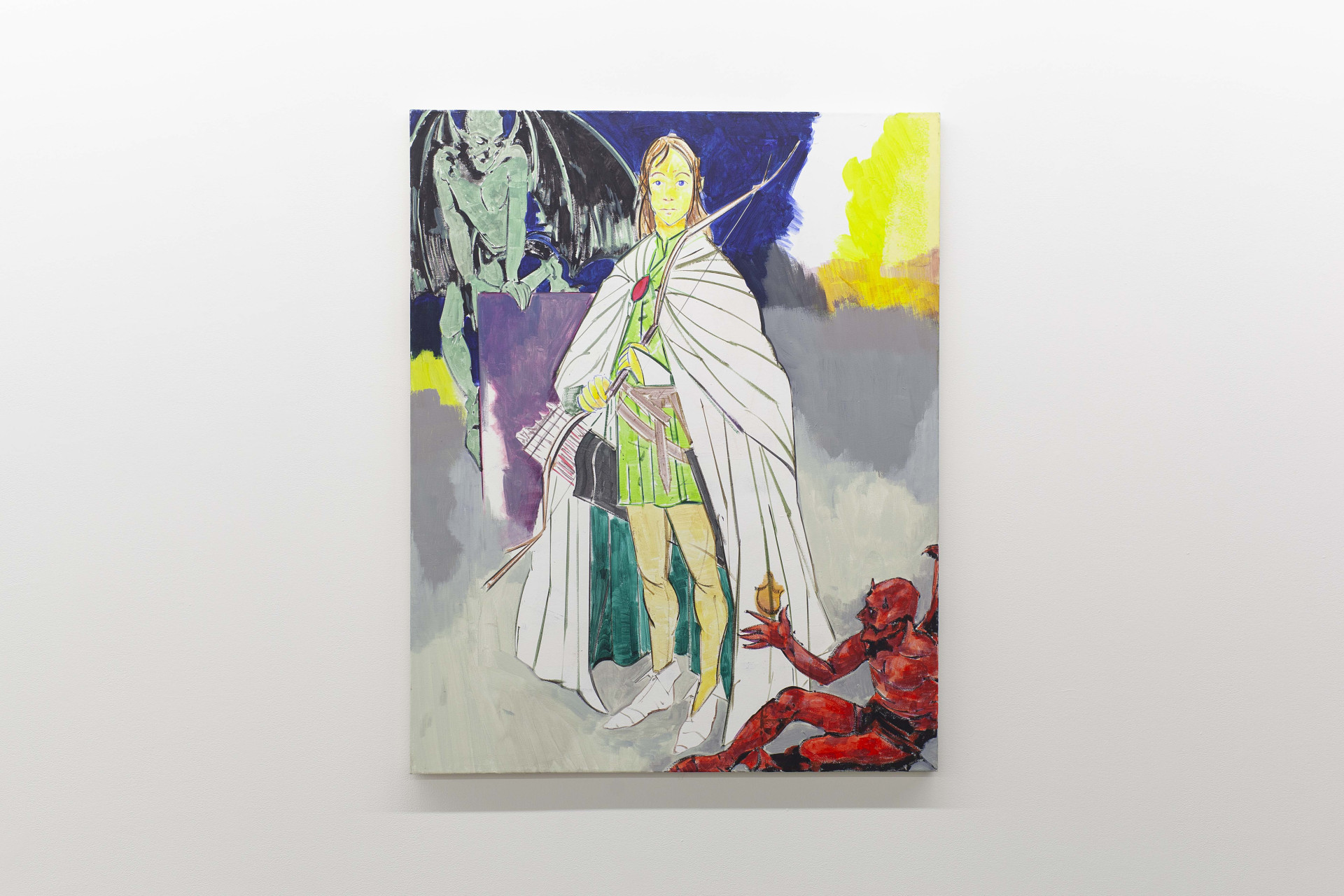


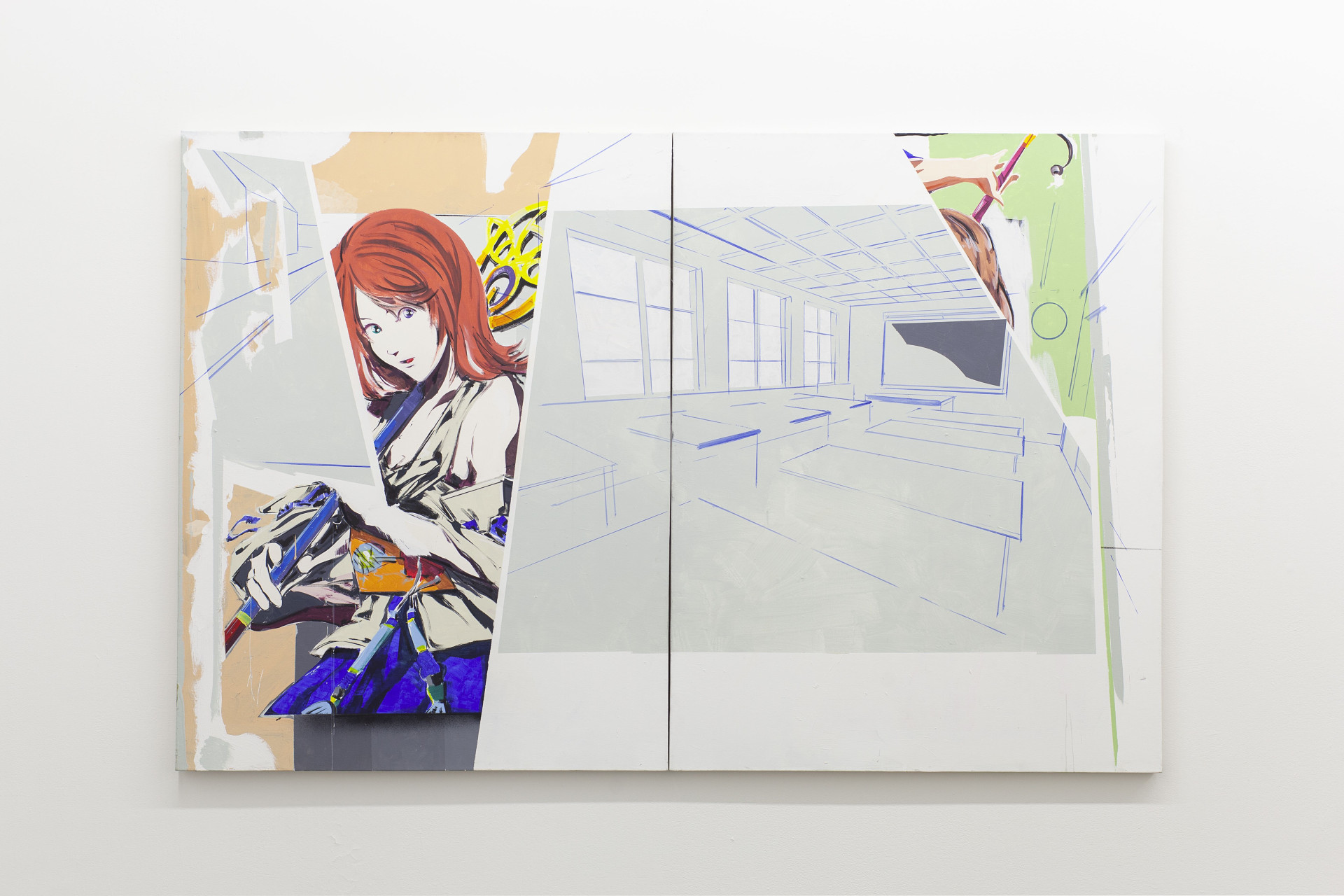
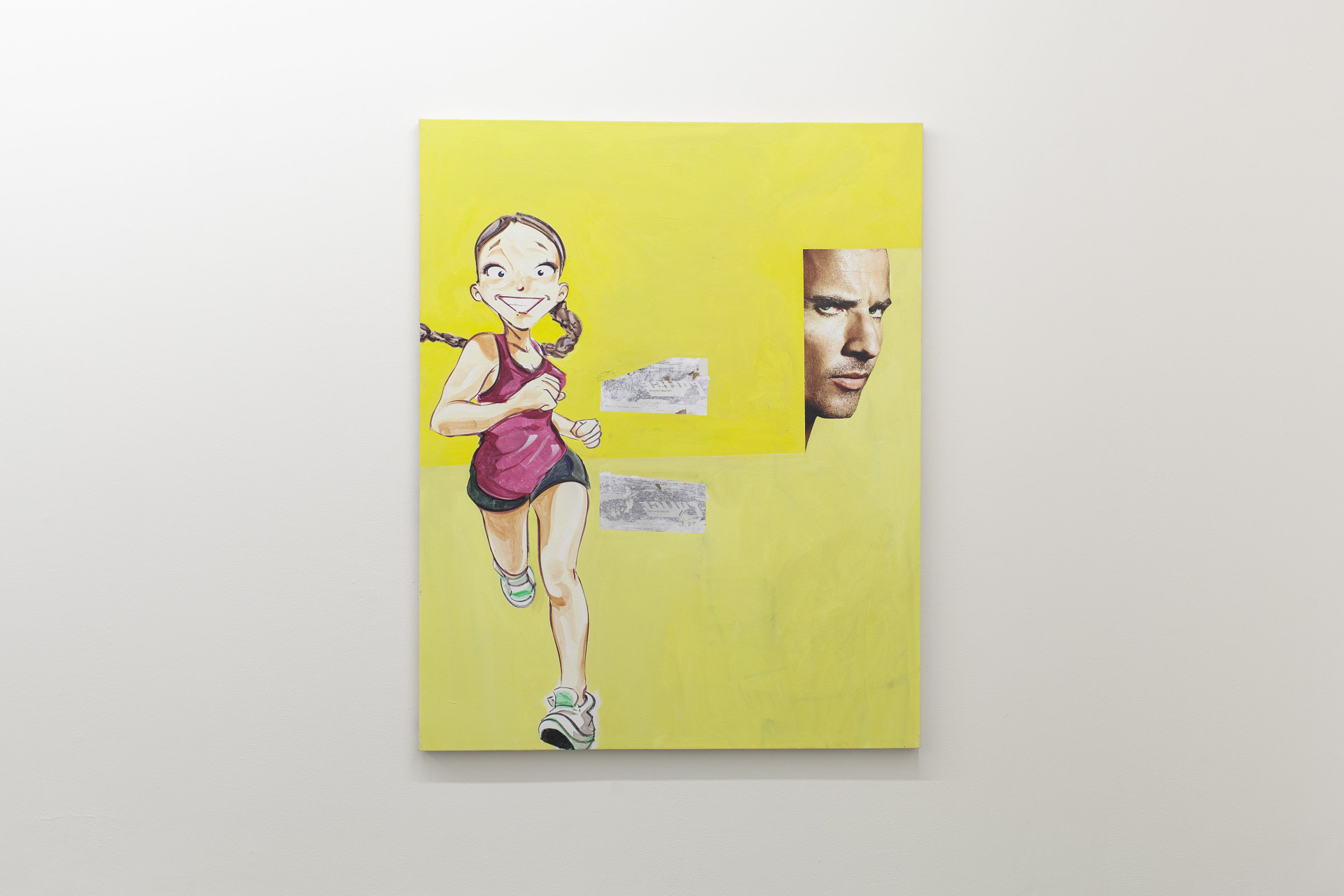

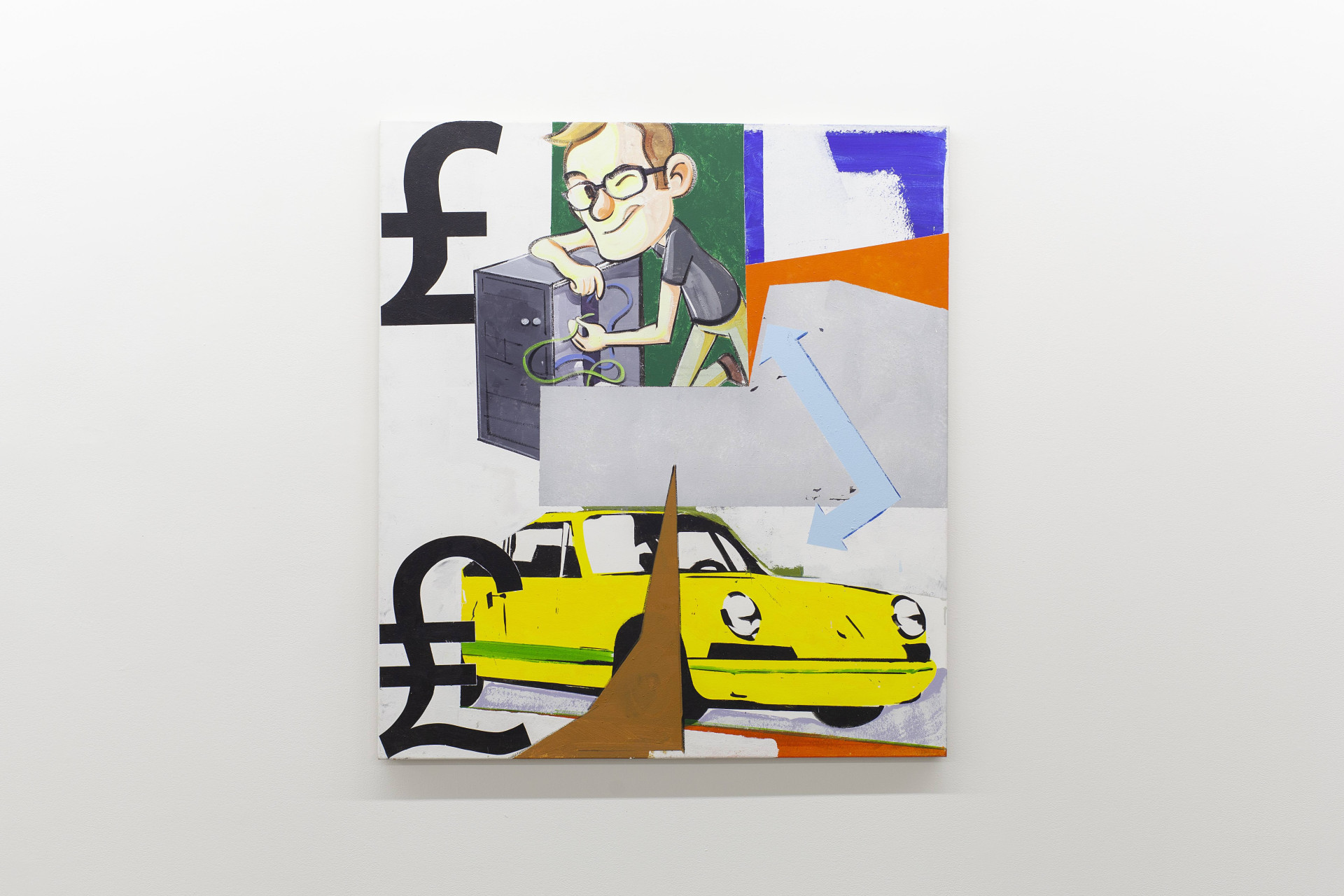



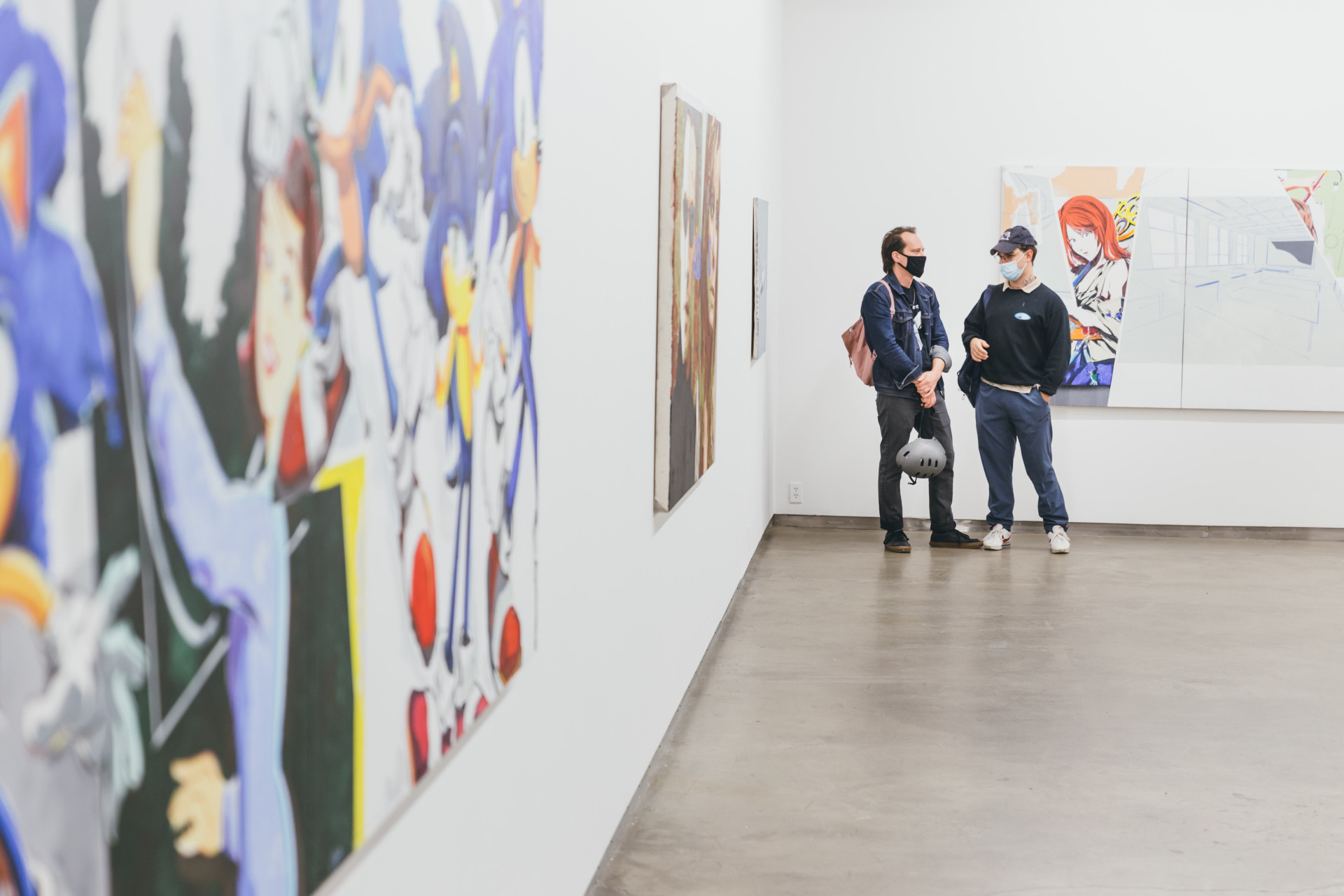

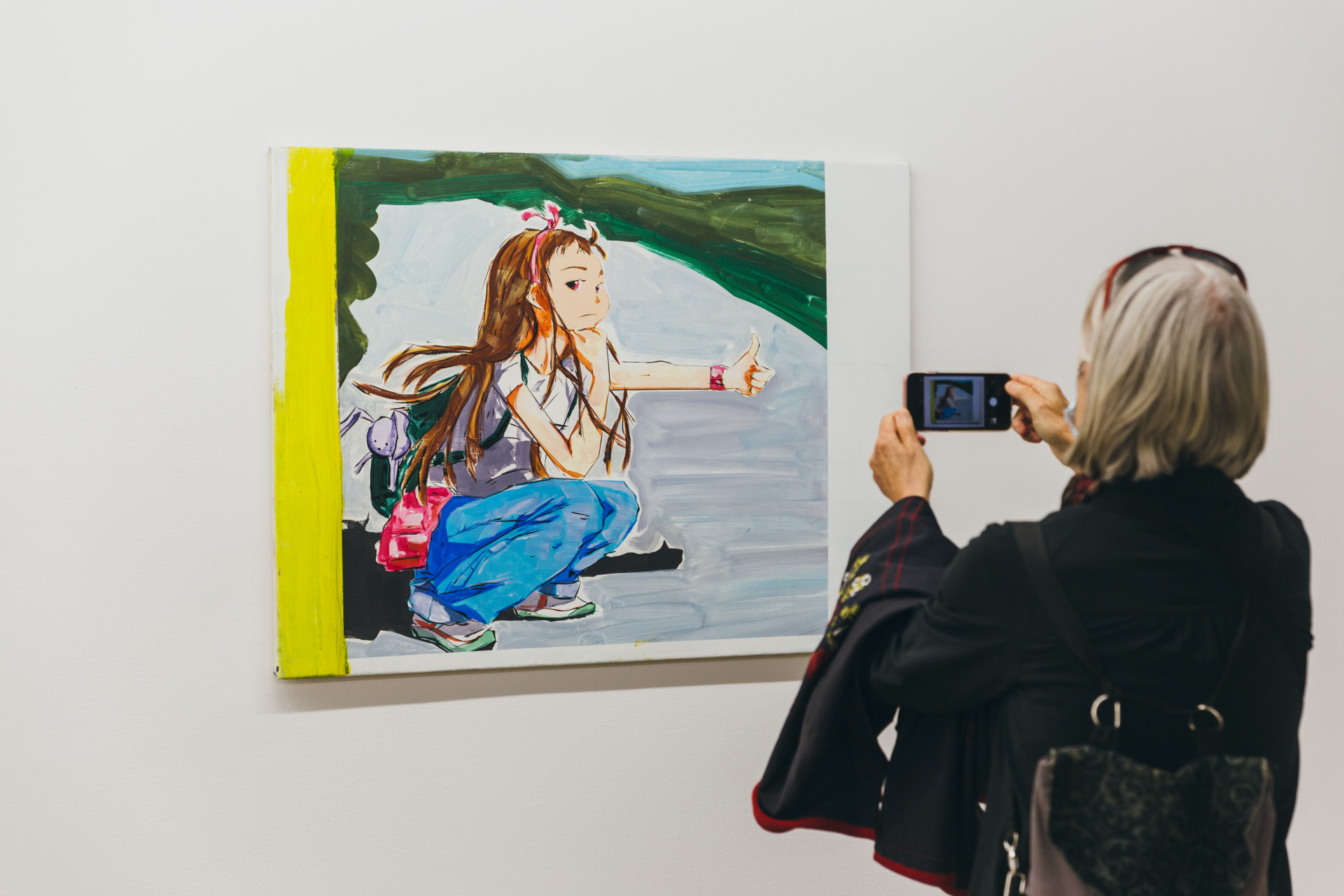
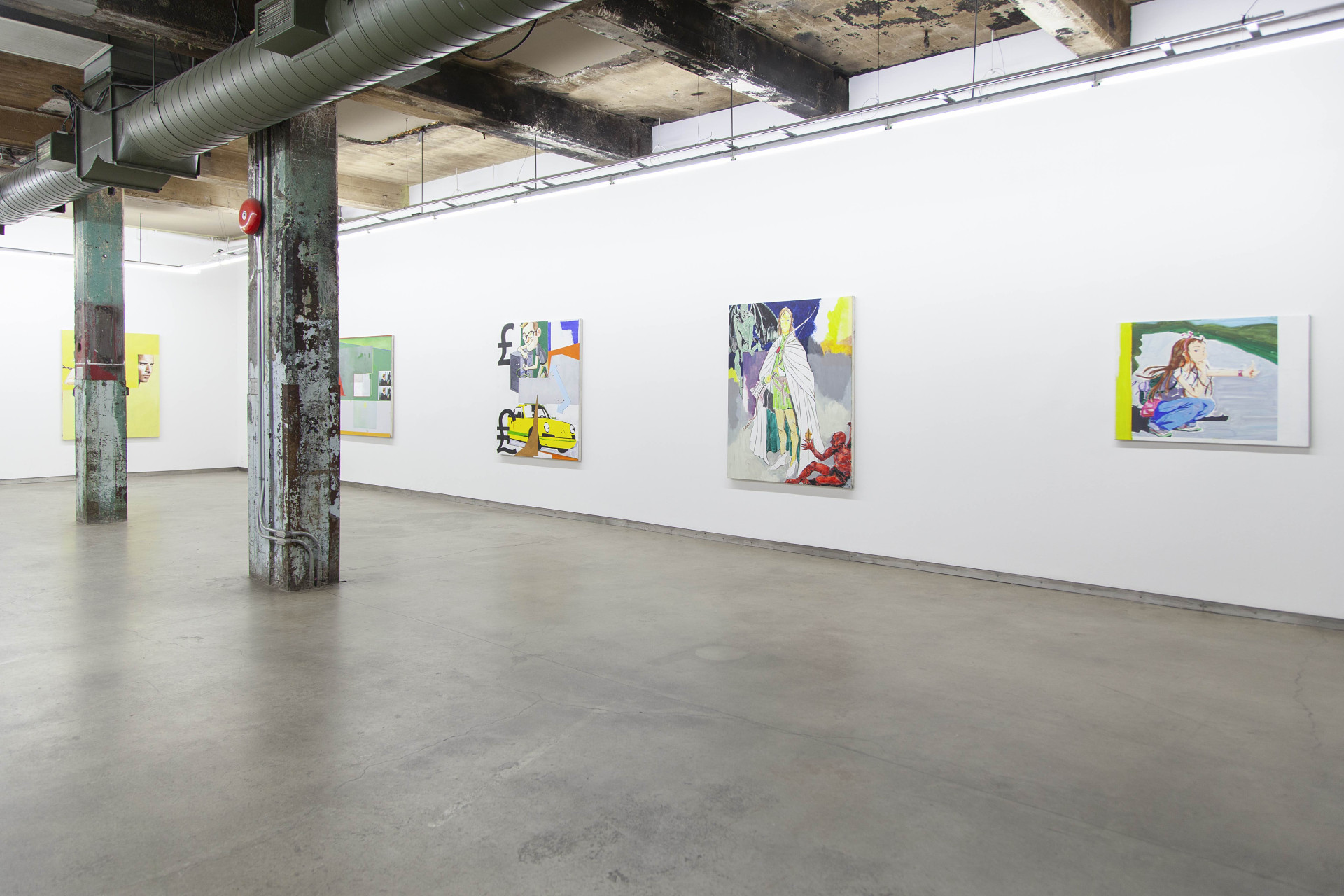
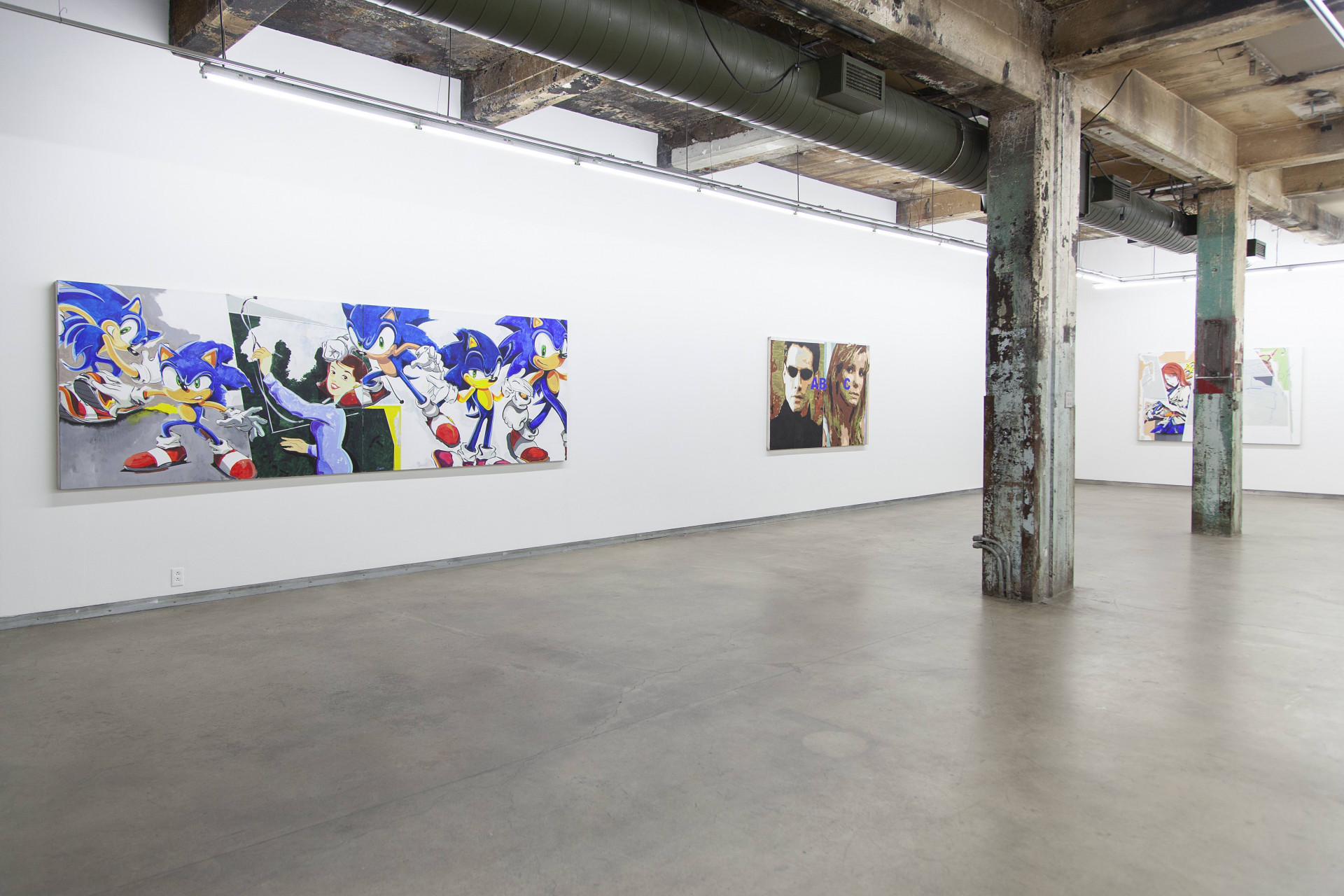
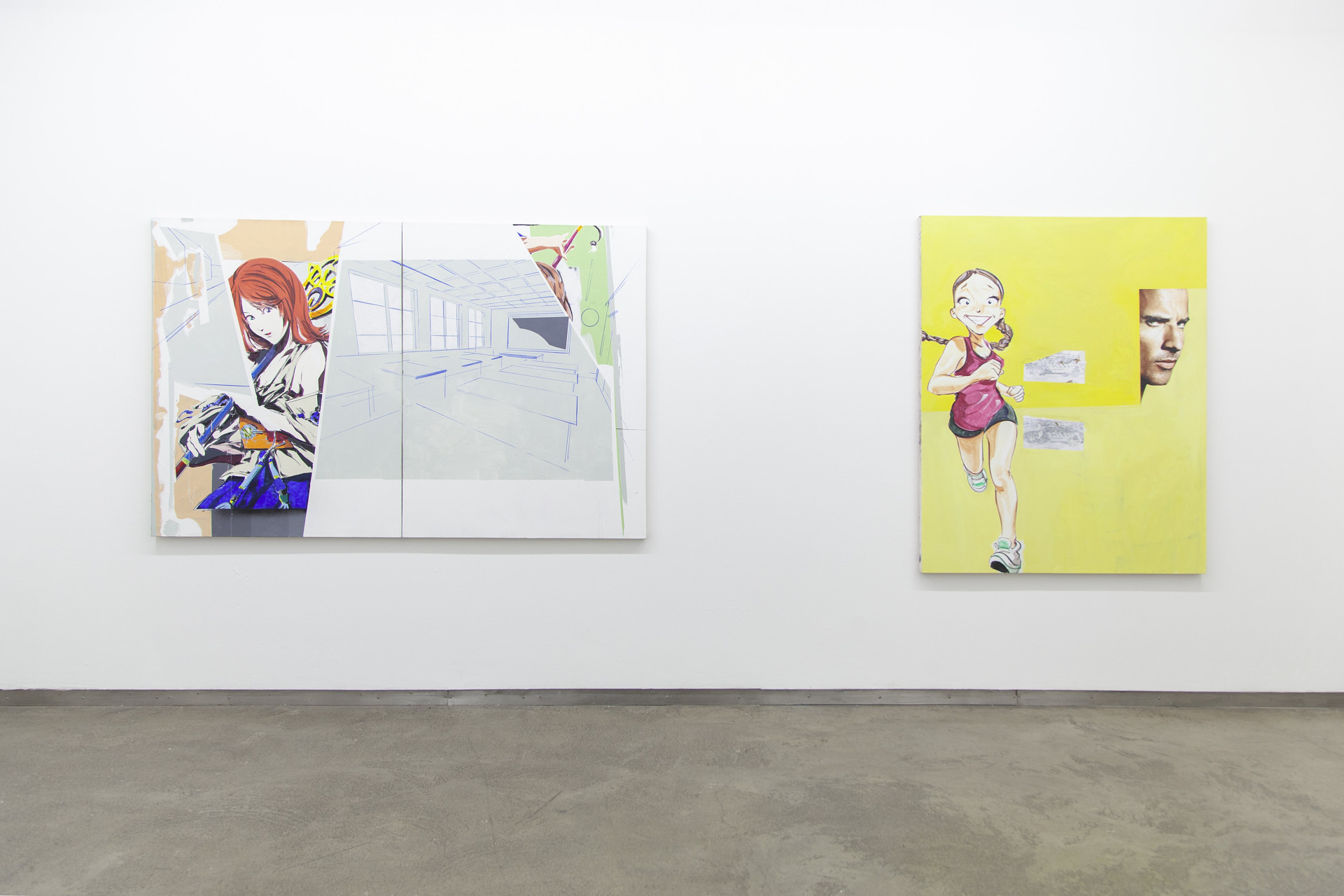
THE WATCHERS BEING WATCHED
The many characters populating Vincent Larouche’s recent paintings are inspired by pop and media culture icons of the last twenty years and immerse viewers into a fantasy world that is at once joyful and disturbing. Sci-fi films, video games, manga, cyberpunk, and heavy metal culture form the basis for the young artist’s imaginary. His compositions stage humanoid or mutant pop figures,1 presenting situations with poetic and profoundly skeptical subversive messages.
The naive and sweetened nature of these characters can make them appear ingenuous, even childish at first. Yet a closer look reveals the unnerving tension palpable beneath the surface, as though they are caught in the net of an impossible situation, which is malevolent, even fantastical or conspiratorial, and are possessed by occult forces or equipped with psychological weapons, supernatural attributes, or superpowers. Prey or predator, they appear to us as reminders of the slippages, ruptures, and instability of our time, when the connection between the real and the virtual, the scientific and the supernatural is restructuring hierarchical relationships.
The narrative tension is sustained through the dynamic pictorial composition and technical freedom that play as much on the skillful handling of the line as on the seemingly naive insertion of gleaned and pasted elements. Densely painted sections border minimally covered surfaces; diptychs create a sequential rhythm; empty areas and radical segmentations disrupt and reorganize the painted space.
Yet, first and foremost, Larouche’s characters capture our attention through their gaze. Each one of them expresses an emotion whose interpretation proves to be slippery, whether it is mysterious, malicious, enthusiastic, or pernicious. Placing us at the centre of the action, their eyes—whether empty or masked, multicoloured or ocellar2—fix their hypnotizing and destabilizing gaze on us. Although the drone protagonist of Sky Painting seems a priori to be an exception because it lacks a physiological gaze, the idea of a blind machine is just subterfuge since, equipped with a camera and controlled remotely, it acts as an intermediary or extension of our human vision.3 The fact that all of them, humans, mutants, and even machines, are looking at us gives us the uncomfortable feeling of being witnessed or perpetually watched.
Caroline Andrieux
Translated by Oana Avasilichioaei
*To access English subtitles, please click on the settings icon > Subtitles/CC > Select English (Canada)
[1] For example, Sonic the Hedgehog in A Study in Motion, the Neo character from The Matrix in Ontological Man Fiction, or Spider-Man in Silent Advisor.
[2] Meaning only one eye.
[3] In robotics, it is well known that the gaze is the most difficult aspect to adapt to machines and that this extremely sensitive component invariably distinguishes human from android. Larouche plays on this difference by intensifying each of his characters’s expressions.
Curator
Caroline Andrieux
